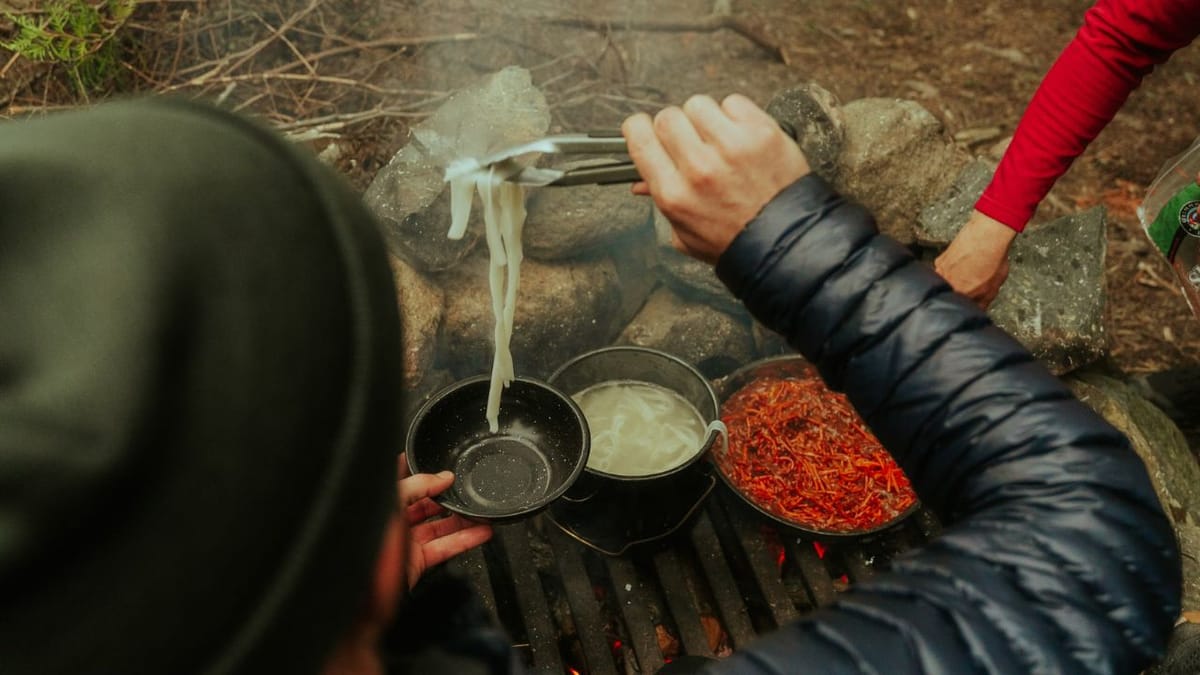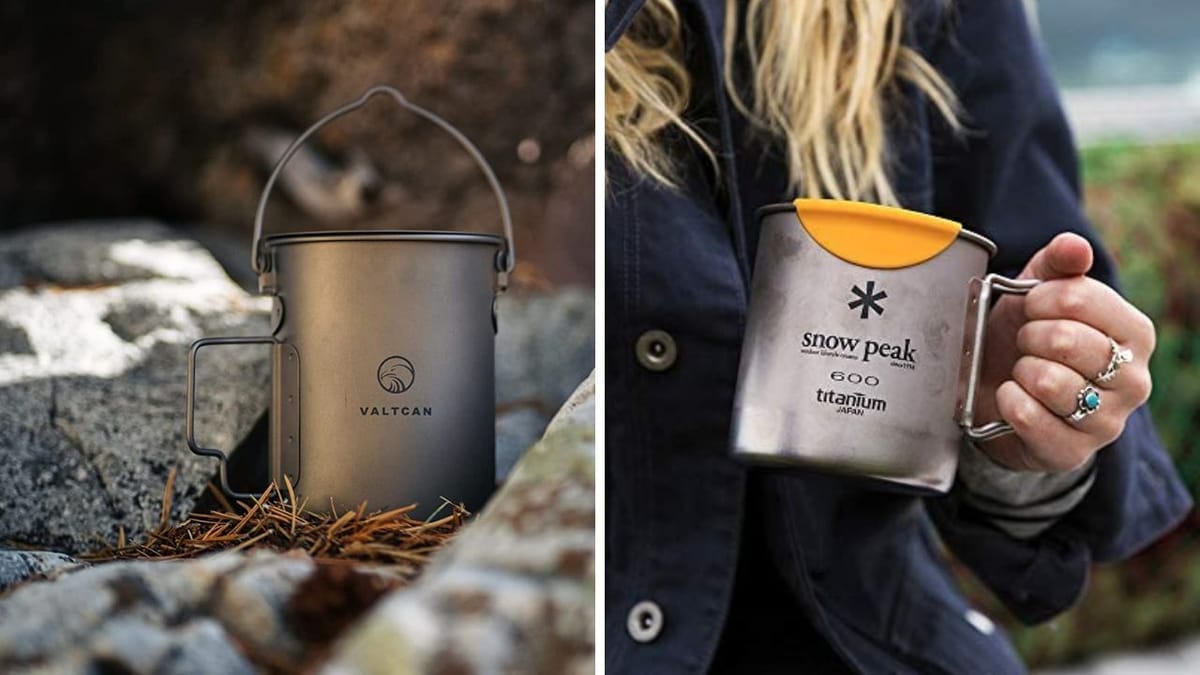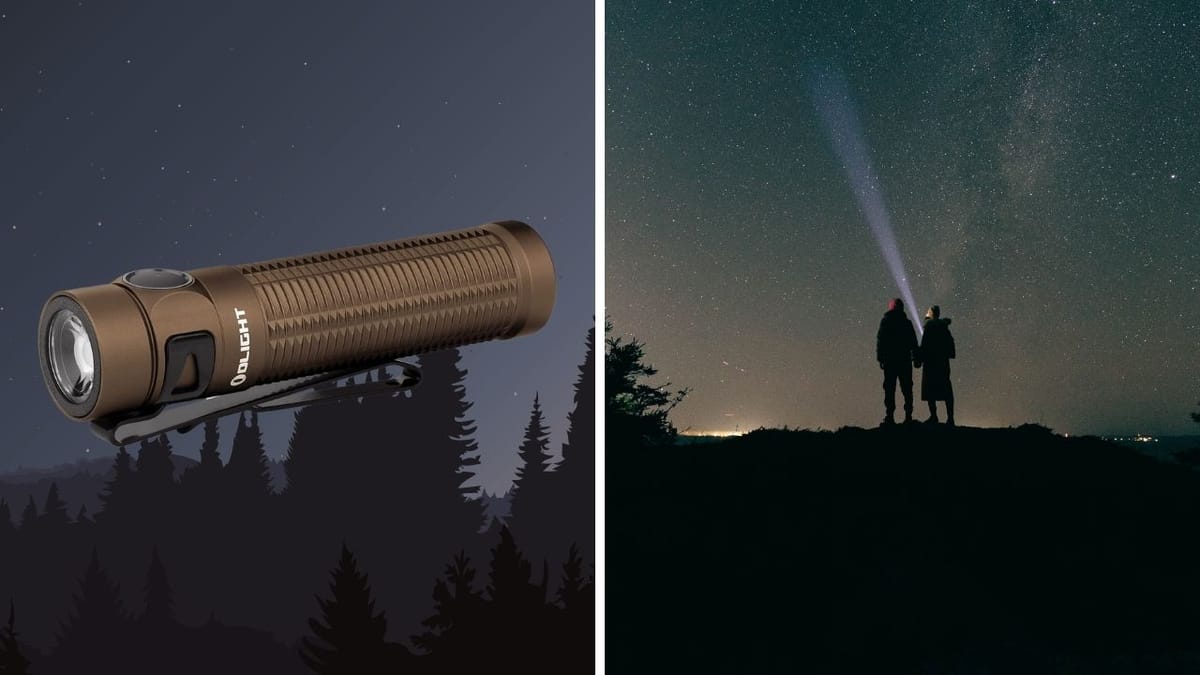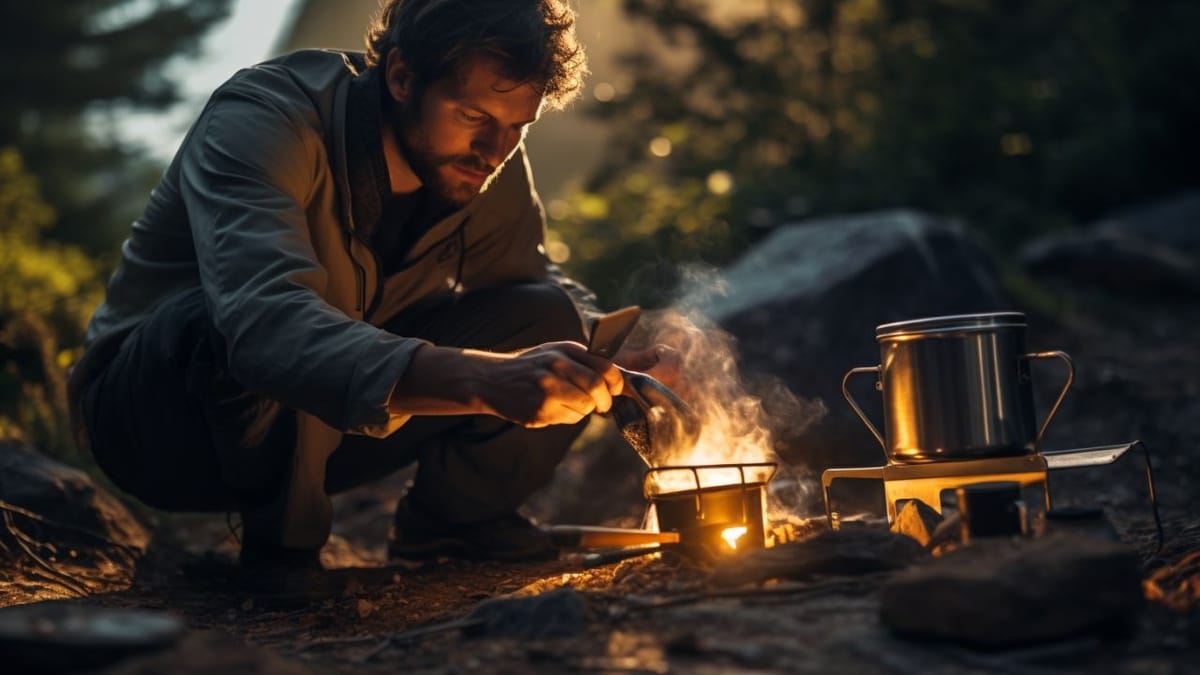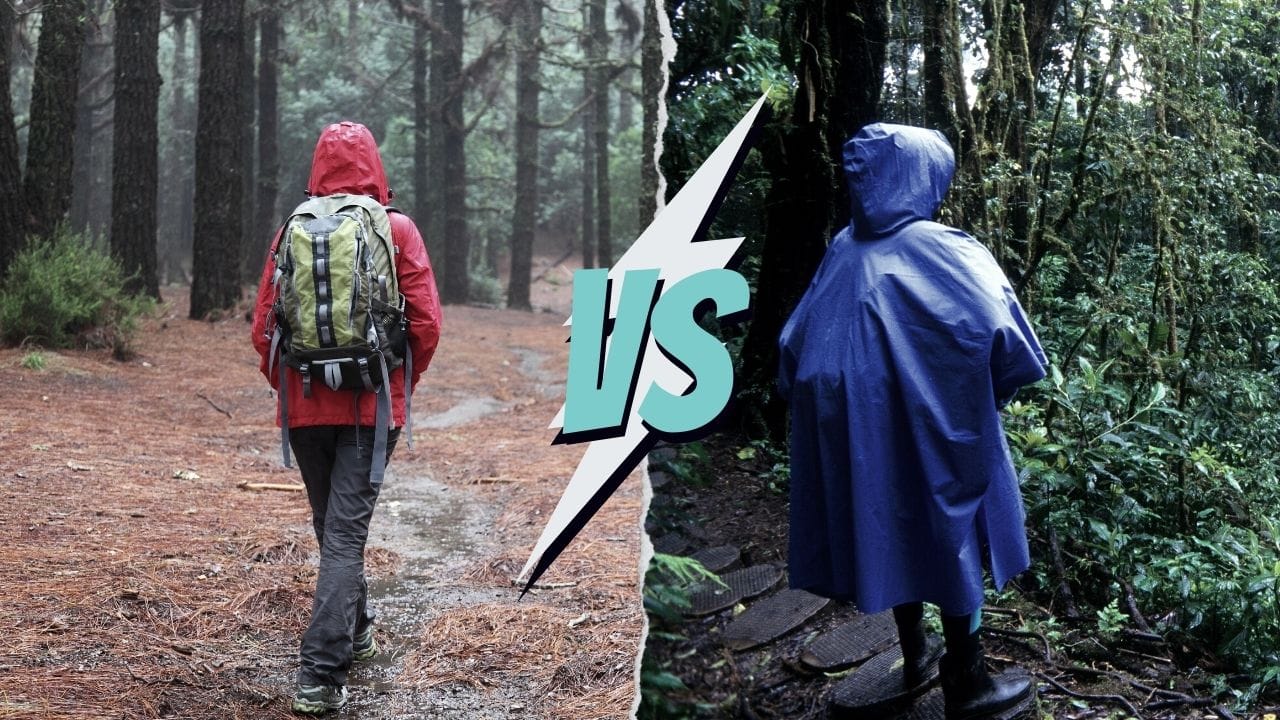
Backpacking Poncho vs Rain Jacket: Which Reigns Supreme for Hikers?
Deciding between a Backpacking Poncho vs Rain Jacket? Get expert insights on weather protection, comfort, and style for your trails.
Key Takeaways
- Choice Depends on Conditions: The decision between a backpacking poncho and a rain jacket hinges on specific weather conditions, terrain, and the nature of your activity.
- Poncho Pros and Cons: Ponchos offer easy-to-wear, extensive coverage, including backpack protection, and are great for light activity, but can be cumbersome in windy conditions.
- Rain Jacket Advantages: Rain jackets provide a snug, wind-resistant fit, better mobility for active use, and often feature breathable, waterproof materials like GORE-TEX, but may require additional rain pants for complete protection.
- Consider Personal Preferences: Your choice should also factor in personal comfort, style preferences, and the need for versatility and ease of packing in your outdoor gear.
You've been there before – standing at the trailhead, backpack ready, eyes scanning the sky. Clouds loom, and a question nags at your adventurer's heart: should you pack a rain poncho or a rain jacket?
It's a debate as old as the trails you tread, and in extreme conditions, the answer isn't just about staying dry. It's about choosing gear that could make or break your wilderness experience.
In the world of backpacking, especially when facing the whims of Mother Nature, reliable wet weather gear isn't just a convenience—it's a necessity.
Whether it's a sudden downpour in the Rockies or an unexpected gust of wind on the Appalachian Trail, the right choice can mean the difference between a memorable adventure and a soggy, miserable trek.
So, let's dive deep and dissect these two contenders.
Understanding the Basics: Rain Poncho and Rain Jacket
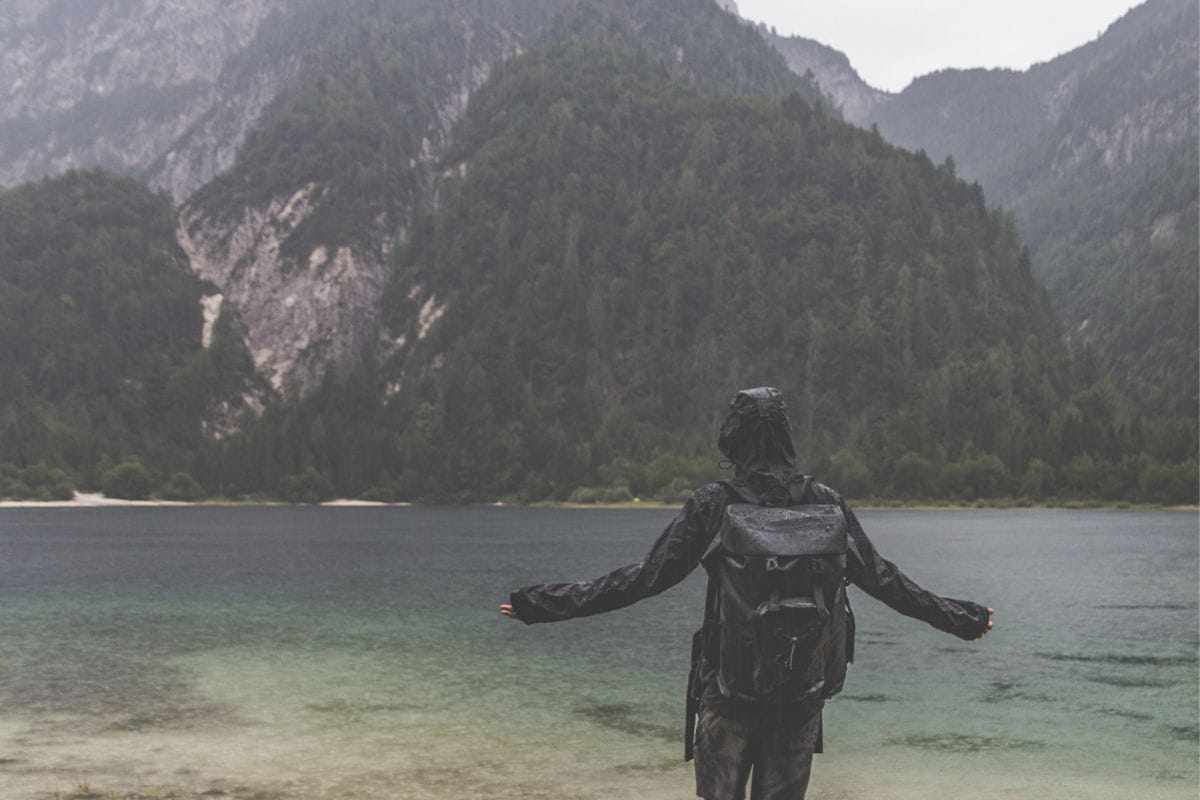
When it comes to choosing between a rain poncho and a rain jacket, it's essential to understand what you're dealing with. Let's start with the basics.
Rain Ponchos: Think of them as your personal mobile shelter. Typically, a rain poncho is a single, large piece of fabric with a hole for your head, draping over your body.
- They're incredibly lightweight and often made from materials like coated or laminated nylon.
- Ponchos offer a loose fit, which is excellent for air circulation, but they can be a bit unwieldy in windy conditions.
- Some are even designed to cover your backpack, and in a pinch, can double as a makeshift tarp or ground cover to protect yourself and gear from the wet ground.
Rain Jackets: These are more tailored to your body shape, crafted from materials like waterproof breathable fabric and GORE-TEX.
- They're designed to offer better protection against wind and often come with features like zippered pockets, adjustable hoods, and sometimes even zippered underarm vents for better temperature regulation.
- Unlike ponchos, rain jackets usually require additional rain pants to keep your lower body dry.
Here's a fun fact: The science behind materials like GORE-TEX is fascinating. They use a membrane with pores 20,000 times smaller than a water droplet, yet 700 times larger than a molecule of water vapor. This means water can't get in, but sweat can get out, making these fabrics waterproof yet breathable.
The Role of Weather Conditions
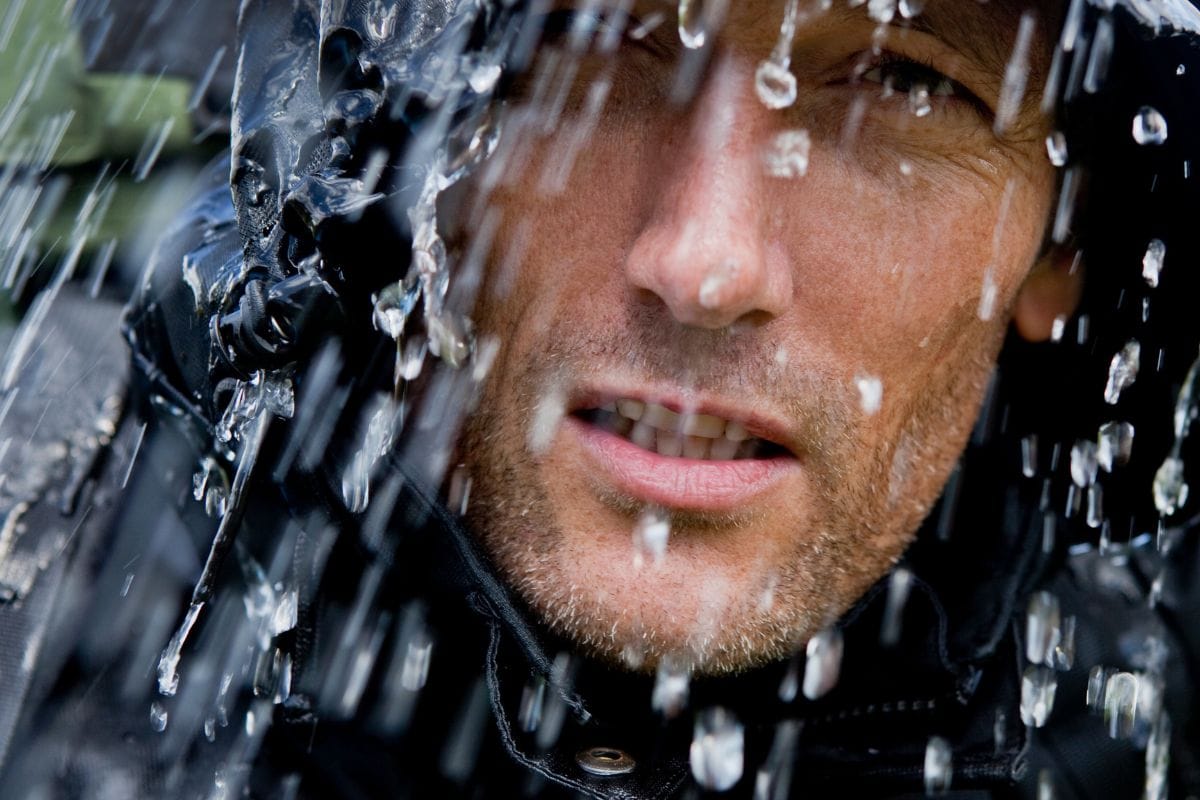
Now that you're familiar with the basics of rain ponchos and jackets, let's talk about the real game-changer: weather conditions.
When you're out there, battling the elements, your choice between a poncho and a jacket can significantly impact your comfort and safety.
Heavy Rain: Let's start with the obvious - downpours. In torrential rain, a poncho's broad coverage can be a blessing. It's like having a mobile tent over you, keeping your upper body and backpack dry.
- However, in heavy rain, that same coverage can become a drawback as ponchos can trap moisture inside, leading to a mini-sauna effect.
On the other hand, rain jackets, especially those made with waterproof breathable fabrics, offer a snugger fit, which means less flapping fabric and more targeted protection.
- They keep the rain out while allowing your body heat to escape, minimizing sweat buildup. But remember, if you don't wear rain pants, your lower half might still get soaked.
Wind: Now, let's talk about wind – the unseen adversary. Ponchos, with their loose material, can turn into sails in windy conditions.
Ever tried walking against a strong wind with a poncho? It's like a resistance workout you didn't sign up for.
Rain jackets, however, are the clear winners in windy weather.
Their close-fitting design reduces the chance of them catching the wind, making them more practical for gusty days.Plus, many have adjustable cuffs and hoods, ensuring that the wind doesn't sneak in.
Cold Weather: In colder conditions, layering is key. Here, rain jackets have an advantage.
Their snug fit makes layering easier and more effective at trapping body heat. A poncho, while roomy, might not hold in the heat as well, especially if the wind is blowing.
Tip: Always consider the weather forecast and the nature of your trip. If you're expecting varied conditions, a layered approach with a rain jacket might offer more versatility. For light rain and less windy conditions, a poncho could be your simple, lightweight solution.
Protection and Comfort
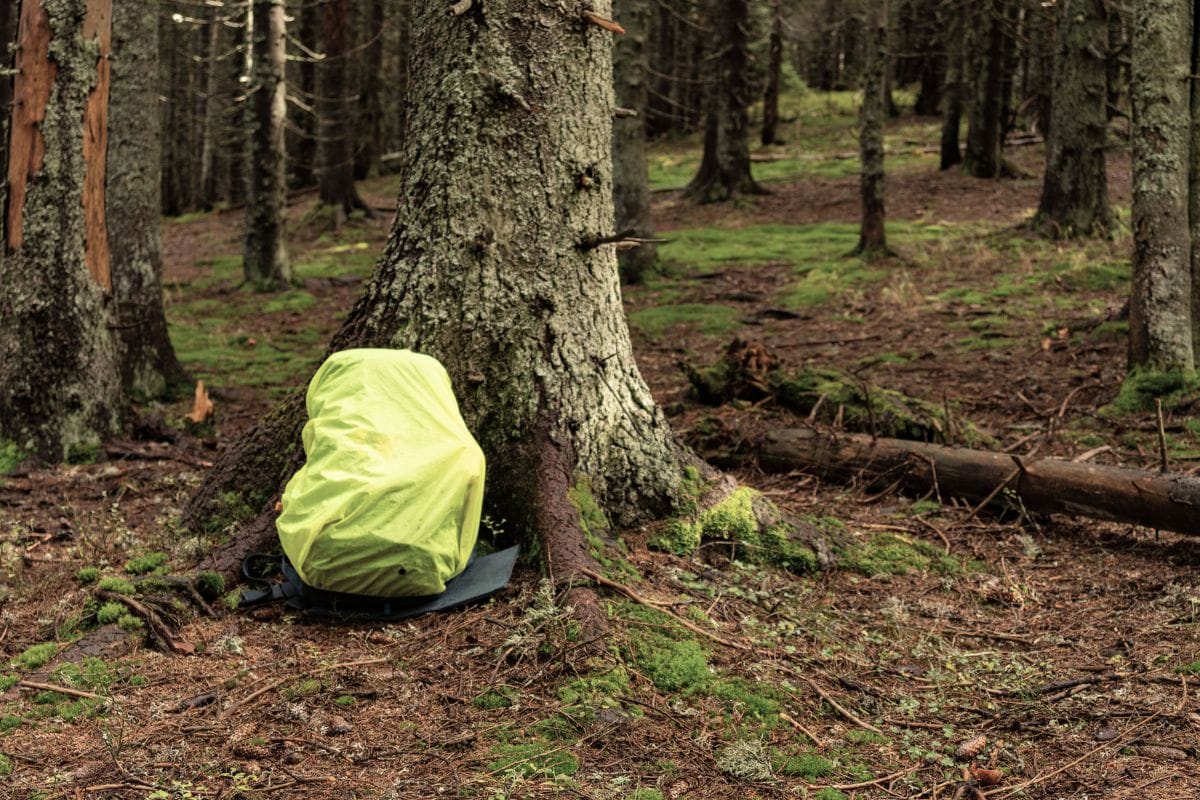
As you gear up for your next outdoor adventure, understanding how your rain gear will protect and comfort you is crucial. You're not just battling the rain; you're looking to stay warm, dry, and comfortable.
So, how do ponchos and rain jackets stack up in terms of protection and comfort?
Wet Weather Protection: Ponchos offer a unique advantage here. Their large size covers not just you but often your backpack too.
Imagine walking through a rainy forest, and your pack stays as dry as you – that's the poncho's superpower. But it's not all rainbows and dry backpacks.
Ponchos can be cumbersome, and in windy conditions, they might flap around, letting rain sneak in from the sides.
Rain jackets, in contrast, offer a more body-hugging protection. Their design usually includes features like sealed seams, waterproof zippers, and adjustable hoods that keep the rain at bay.
Pair a rain jacket with rain pants, and you’ve got a full suit of armor against the elements. But, it’s an extra piece of gear to pack and wear.
Breathability and Body Heat Retention: This is where materials and design play a pivotal role. Rain jackets made with materials like GORE-TEX provide excellent breathability while keeping you dry.
They allow sweat vapor to escape, preventing you from feeling like you're in a walking sauna. In cold weather, this ability to manage moisture and retain body heat makes rain jackets a favorable choice.
Ponchos, with their looser fit, naturally offer good ventilation. However, they might not retain body heat as effectively as rain jackets in colder conditions. But on the flip side, on a warm, rainy day, a poncho's breeziness is a welcome feature.
Tips for Choosing:
- Consider the intensity of your activity. If you're going to be moving a lot, generating body heat, a breathable rain jacket might be your best bet.
- Think about the duration and conditions of your trip. For quick outings in mild weather, a poncho is a lightweight, hassle-free option.
- Don't forget about layering. In colder conditions, a rain jacket can be part of a strategic layering system to keep you warm and dry.
Durability and Material Quality
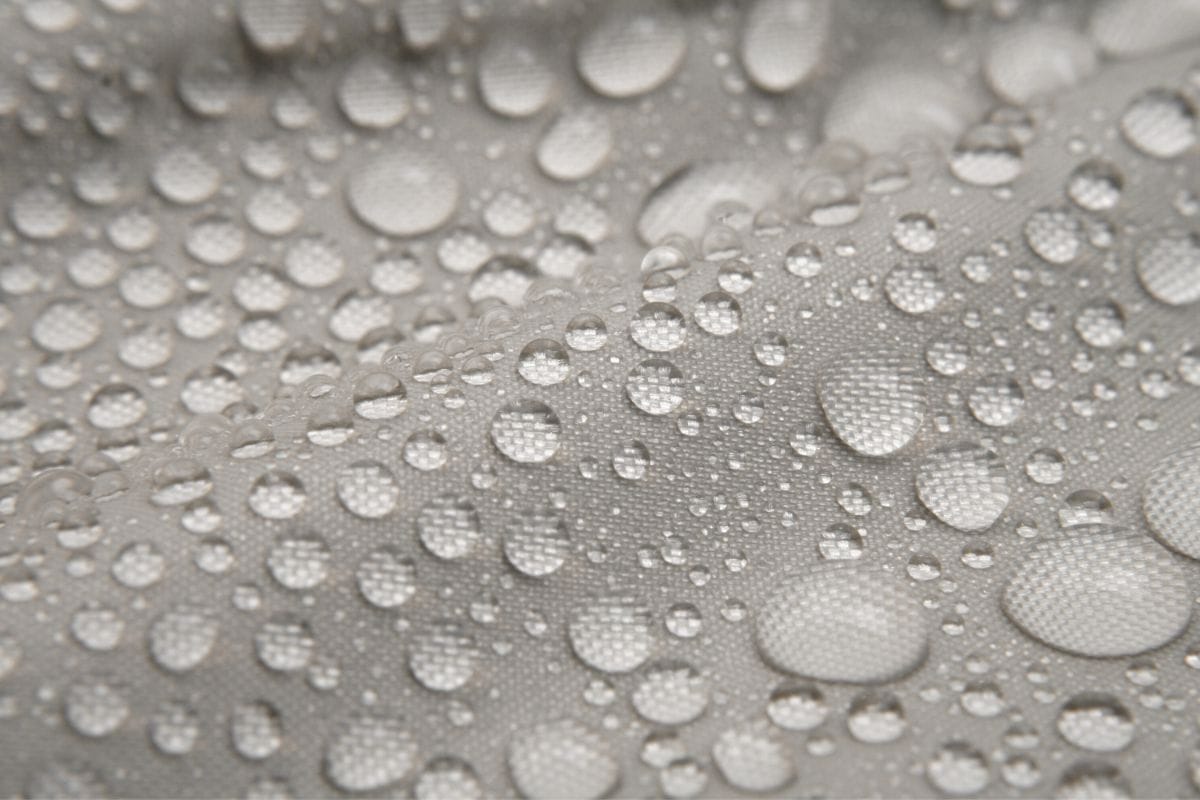
As you stand at the crossroads of choosing between a poncho and a rain jacket, it's crucial to consider how they'll hold up against the harshness of nature.
After all, what's the point of rain gear if it falls apart when you need it the most?
Let's break down what makes these materials tough enough to take on the elements.
Coated or Laminated Nylon: This is a common player in the rain gear game. Coated nylon is often found in ponchos, providing a waterproof barrier.
- The coating – typically polyurethane or a silicone elastomer – is applied to one side of the nylon fabric, making it water-resistant.
- However, it's not just about keeping the rain out; this coating also adds to the fabric's durability, protecting it from abrasion and tears.
Laminated nylon, often seen in higher-end rain jackets, takes it a step further.
- It involves bonding a waterproof membrane to the nylon fabric, creating layers that are not only waterproof but also breathable.
- Think of it as a sandwich, with each layer serving a purpose – protection, breathability, and durability.
Silicone Coating: Here’s a fun fact for you: silicone coatings are often used in ultralight gear.
Why? Because silicone imparts excellent water repellency and increases tear strength without adding much weight. This makes it a popular choice for lightweight ponchos and minimalist rain jackets.
Durability in Action: Imagine you're trekking through a dense forest. Branches snag and scrape as you navigate the undergrowth.
In such scenarios, the durability of your rain gear is tested.
A silicone-coated poncho might glide through without a hitch, whereas a basic coated nylon poncho might succumb to tears.
Tips for Assessing Durability:
- Check the Denier: This is a measure of the fiber thickness. Higher denier counts often indicate more robust and durable fabric.
- Seam Construction: Look for taped or welded seams, especially in rain jackets. These contribute significantly to both durability and waterproofness.
- Feel the Material: Sometimes, the best test is a tactile one. Heavier, thicker materials tend to be more durable, but also heavier to carry.
Functionality in Extreme Terrains
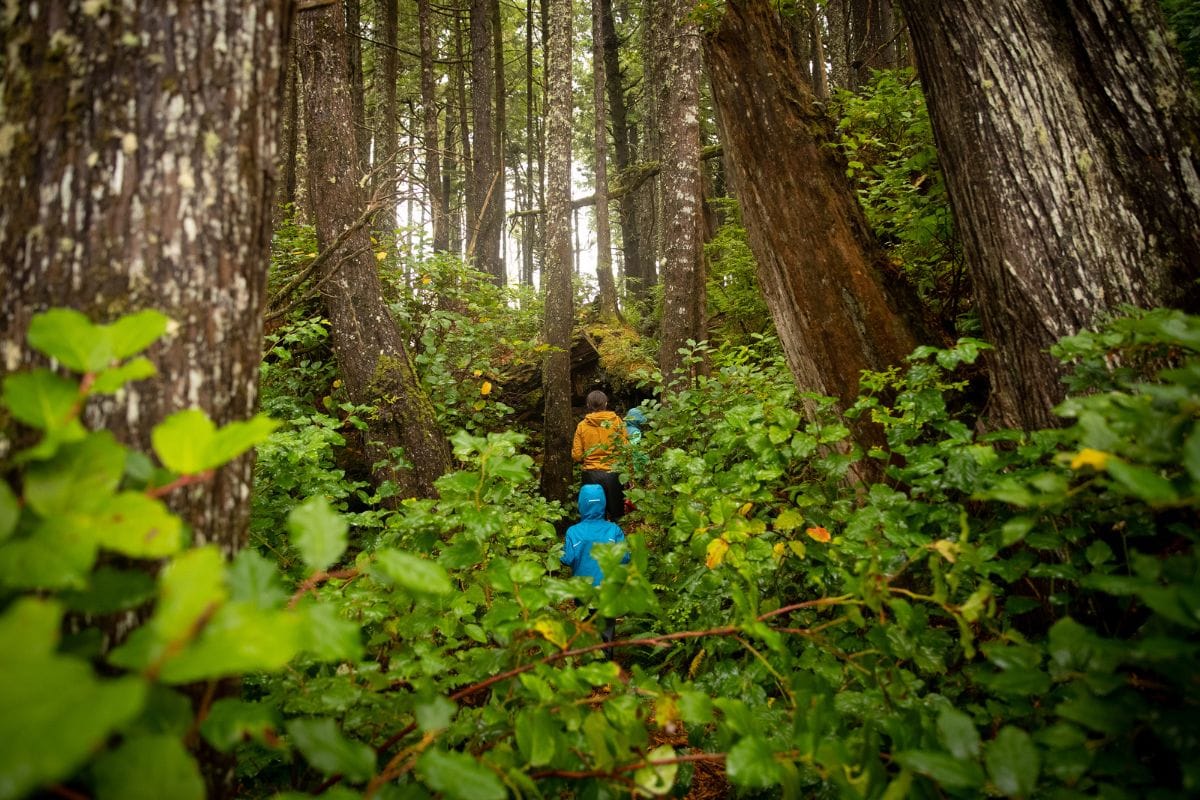
Let's take our exploration of ponchos versus rain jackets into the wild, rugged terrains of the Pacific Northwest - a region notorious for its challenging weather and landscapes.
Here, the functionality of your rain gear is not just a comfort factor; it's a survival necessity.
Traversing the Dense Forests: Picture yourself winding through dense, moss-laden forests, where the rain seems to have its own personality.
In these conditions, a rain jacket paired with rain pants can be a lifesaver. It's snug fit and durable material keep you protected from both the relentless downpour and the occasional brush against rough bark or thorny undergrowth.
The adjustable features like cuffs and hoods help you seal out the rain completely.
However, don't underestimate the poncho in these conditions.
Its loose fit and extensive coverage can be great when you're moving through less dense areas. The poncho drapes over your backpack, keeping your gear dry, and in lighter rain, its ventilation is unmatched, preventing that uncomfortable clammy feeling.
Navigating the Rugged Mountains: As you ascend the rugged, misty mountains, the weather can change in the blink of an eye.
Here, the wind becomes a significant factor.
A poncho might offer quick coverage but can turn into a billowing nuisance in strong winds, reducing your mobility and even potentially becoming a safety hazard.
In contrast, a rain jacket is a champion in these conditions. Its wind-resistant design keeps you warm and dry as you face the elements head-on.
The breathable fabrics ensure that even as your body works harder at higher altitudes, you're not getting uncomfortably damp from sweat.
Tips for Tackling Tough Terrains:
- Layering is Key: In extreme conditions, layering your clothing under your rain gear can provide additional warmth and protection.
- Consider Mobility: In terrains that require a lot of movement or climbing, opt for gear that offers greater mobility and fits closer to the body.
- Pack Smart: Always carry emergency gear, including an extra layer of rain protection. Even a lightweight poncho can be a lifesaver if your primary rain jacket gets damaged.
Versatility and Additional Uses
Now, let's shift our focus to one of the most exciting aspects of outdoor gear – its versatility.
You see, both rain ponchos and jackets are more than just rain shields; they're multi-functional tools that can adapt to various needs, especially when you're out in the wilderness.
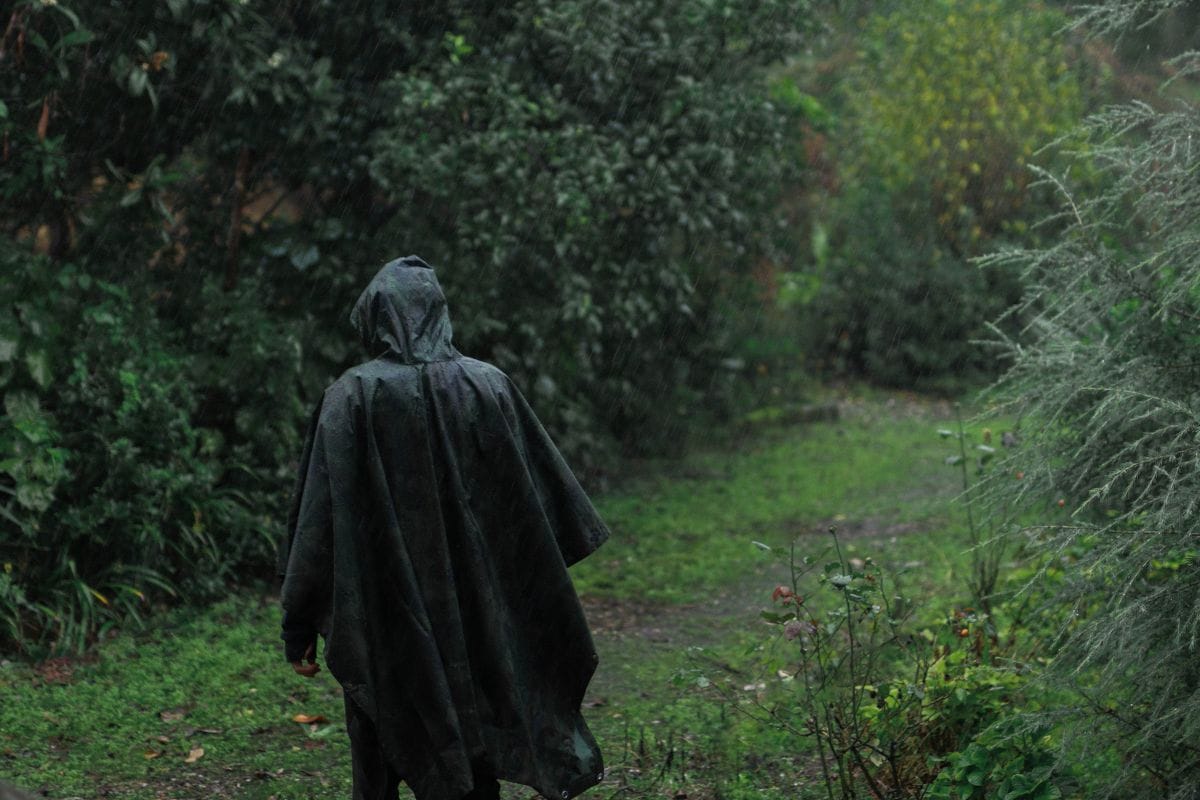
Ponchos: The Multi-Purpose Gear: Ponchos are like the Swiss Army knives of rain gear.
Sure, they keep you dry, but did you ever think of them as potential shelters?
In a pinch, a poncho can be transformed into a makeshift tarp shelter. This is incredibly handy if you're caught in a downpour while hiking and need a quick spot to hunker down.
With some creative rigging using ropes and a few stakes, your poncho can become a temporary refuge from the elements.
And there's more.
Some ponchos are designed to double as ground covers or even as an extra layer of insulation under your sleeping bag. This kind of versatility is invaluable when you're trying to minimize your pack weight and maximize functionality.
Rain Jackets: The Windbreaker and More: Rain jackets, on the other hand, excel in adaptability in different weather conditions.
When the rain stops but the wind picks up, your rain jacket seamlessly transitions into a windbreaker. The same features that keep the rain out – like snug cuffs and a zippered front – also block out the wind, keeping you warm.
But wait, there's more – some rain jackets come with removable layers or linings, which means they can be used in a variety of climates. In warmer weather, you can strip down to a lighter version, or layer up when it gets colder.
Tips for Maximizing Versatility:
- Think Creatively: Look at your gear and think about all the potential uses. A poncho can be a lot more than just a rain cover.
- Test at Home: Before you hit the trail, try converting your poncho into a shelter or using your rain jacket in different weather conditions. It's better to practice these skills in a safe environment.
- Read Reviews and Watch Tutorials: Others have probably discovered clever ways to use these items. Leverage their experience to enhance your own.
>>RELATED Smart Tips for Lower Backpacking Base Weight
Comfort and Breathability
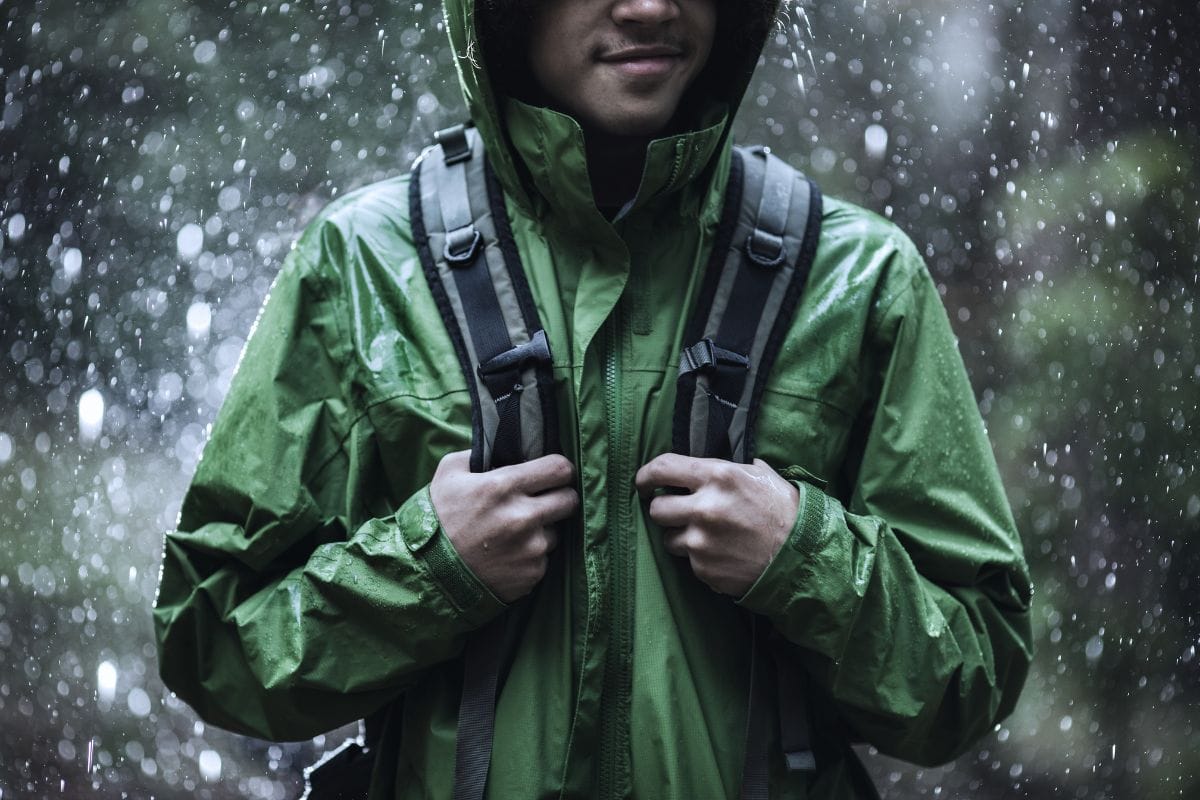
Let's face it, there's no joy in staying dry from the rain only to end up soaked in sweat.
This is where the nuances of comfort and breathability in your rain gear come into play. It's all about finding that sweet spot where you're protected from the elements while still staying cool and comfortable.
The Sweat Challenge: When you're hiking or backpacking, your body works hard, and it sweats - it's as natural as the trail beneath your feet.
But, in a rain poncho or jacket, this sweat can become trapped, creating an uncomfortable and clammy environment. This is where the design and material of your rain gear make a huge difference.
Ponchos and Ventilation: Ponchos naturally offer good ventilation due to their loose fit. This breezy design allows air to circulate, reducing sweat buildup.
However, not all ponchos are created equal.
Look for ones with added ventilation features like zippered vents or adjustable openings. These can be lifesavers on a humid, rainy day, allowing you to regulate your temperature and stay comfortable.
Rain Jackets and Breathability: Modern rain jackets often come equipped with features specifically designed to manage sweat and ventilation.
Zippered underarm vents, also known as pit zips, are a common and effective feature. They let you fine-tune the amount of airflow, cooling you down without exposing you to the rain.
Tips for Maximizing Comfort:
- Layer Appropriately: Wear moisture-wicking layers underneath your rain gear. These fabrics help move sweat away from your skin, keeping you drier and more comfortable.
- Adjust as You Go: Don’t hesitate to open vents or loosen your poncho to regulate your temperature as you move and as weather conditions change.
- Choose According to Activity: If you expect to be very active, like during a strenuous hike, prioritize gear with good ventilation options.
Portability and Storage
You know rain is a possibility, but you also don’t want to be weighed down by bulky gear.
This is where the portability and storage features of your rain gear become crucial.
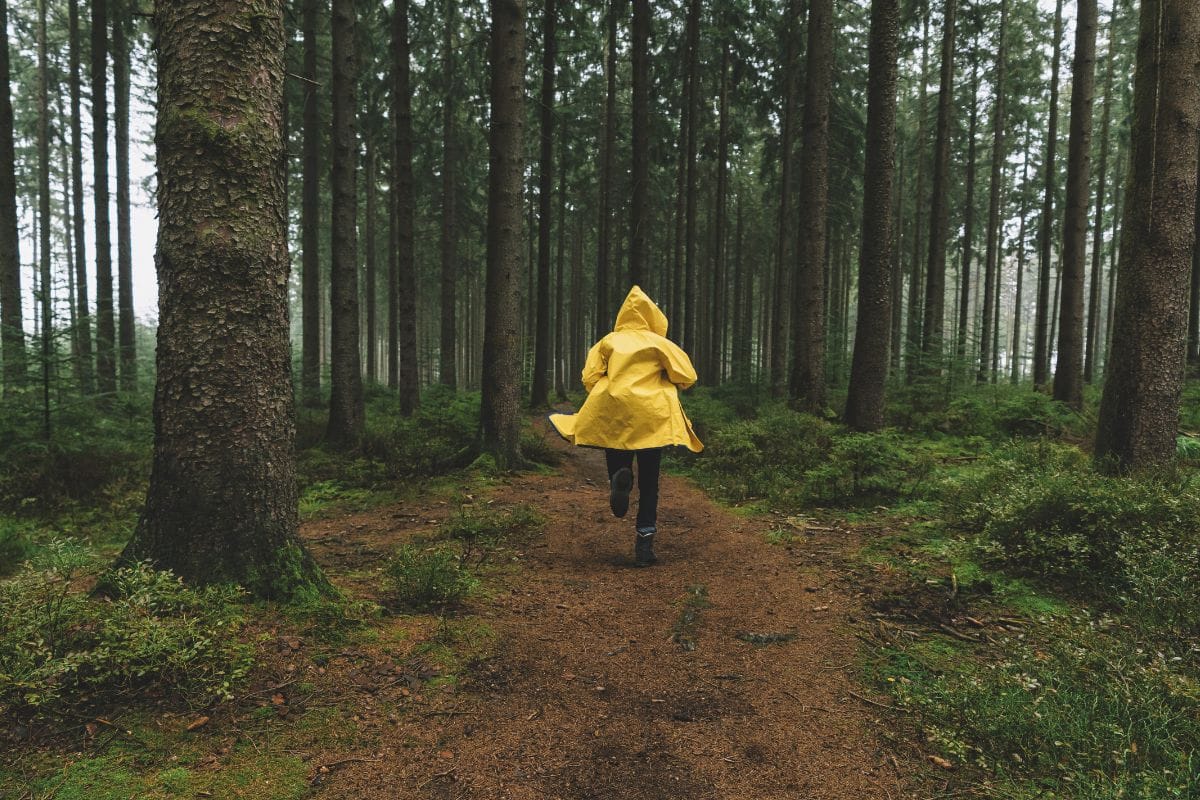
Lightweight Ponchos - The Compact Choice: Ponchos are often hailed for their lightweight and compact design.
Plus, some ponchos can double as a pack cover, offering dual functionality without taking up extra space.
Rain Jackets - Designed for Efficiency: Modern rain jackets are designed with the backpacker in mind.
Additionally, zippered pockets on rain jackets are not just for convenience; they're a strategic element for storage. You can keep essential items like maps, snacks, or a compass easily accessible and dry.
Tips for Packing Smart:
- Test Pack Your Gear: Before your trip, practice packing your rain gear. This helps you understand how much space it occupies and the best way to pack it.
- Consider Multi-Use Items: If your poncho can double as a ground cover or pack cover, you’re saving space and reducing the gear you need to carry.
- Accessibility is Key: Pack your rain gear where you can easily reach it. When the rain starts pouring, you won't want to be digging through your pack.
Style and Personal Preference
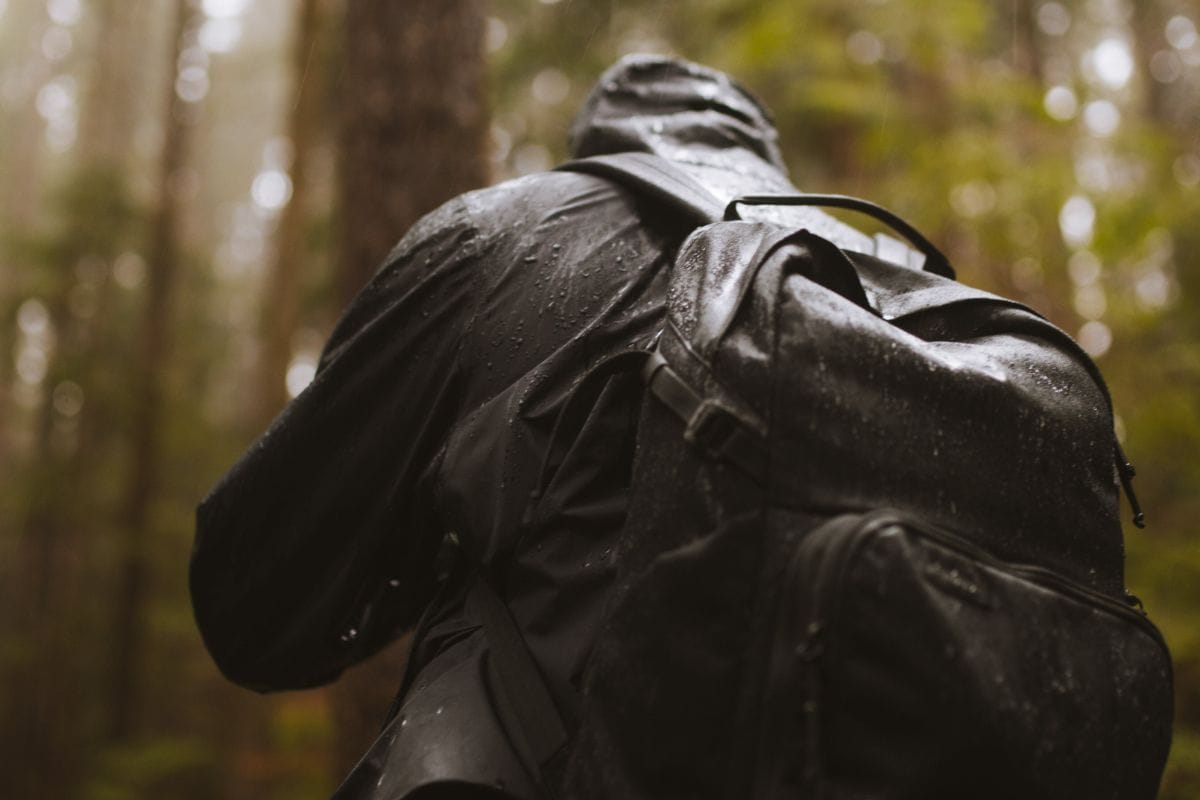
Who says practical can't be stylish? When you're out on the trail, your rain gear is not just a functional item; it's a part of your outdoor persona.
Let's take a look at the style aspects of rain ponchos and jackets, and how your personal preference plays into this sartorial wilderness decision.
The Casual, Free-Spirit Look of Ponchos: Ponchos have a certain laissez-faire vibe to them.
They're the epitome of the 'throw it on and go' mentality, perfect for those who value ease and simplicity. With their loose fit and flowing design, ponchos can give you a bit of an explorer look, reminiscent of adventurous spirits from bygone eras.
And let’s not forget, ponchos come in a variety of colors and patterns, allowing you to express your personal style, even in the middle of a downpour.
The Tailored, Tech-Savvy Appeal of Rain Jackets: On the flip side, rain jackets offer a more fitted, sleek appearance. They speak to those who appreciate technical design and a modern aesthetic.
Rain jackets often come in a range of colors and styles, from bold hues that stand out against nature's backdrop to more subdued tones that blend in with the wilderness.
The form-fitting nature of rain jackets not only serves a functional purpose but also aligns with a more contemporary, athletic outdoor look.
Tips for Matching Style with Function:
- Reflect on Your Outdoor Identity: Are you the minimalist hiker or the gear-savvy trekker? Your rain gear can be an extension of your outdoor identity.
- Don’t Compromise on Function for Style: While aesthetics are important, ensure your choice still meets your functional needs for protection and comfort.
- Try Them On: Before making a decision, try on different styles. How you feel in your rain gear can be just as important as how it looks.
Making the Right Choice
As we come to the end of our journey through the world of rain ponchos and jackets, it's time to distill everything into a guide that'll help you make the best choice for your needs.
Choosing the right rain gear is a balancing act between your activity, the environment, and your personal preferences.
Consider the Weather and Terrain: Are you expecting constant heavy rain or just occasional showers? Will you be battling strong winds on mountain peaks, or are you sticking to calm, forested trails?
Think About Your Activity: If you’re engaging in high-energy activities like mountain biking or climbing, you'll likely appreciate the snug fit and mobility of a rain jacket.
For more relaxed activities, the easy-on, easy-off nature of a poncho could be more convenient.
Personal Comfort and Preferences: Do you get overheated easily, or do you prefer snug, layered warmth? Your own comfort levels and style preferences are crucial in making a choice that you'll be happy with.
Tips for Decision Making:
- Test Before You Invest: If possible, try on both a poncho and a rain jacket. See how they feel and move with them a bit.
- Think Long-Term: Consider the durability and versatility of your choice. It’s better to invest in gear that’ll serve you for many adventures to come.
- Ask for Advice: Don’t hesitate to ask salespeople, experienced hikers, or online communities for their recommendations based on your specific needs.
Frequently Asked Questions
Is a rain poncho better than a rain jacket?
A rain poncho is great for quick use and covers more, like your backpack. But, a rain jacket is better for windy weather and active hiking. It all depends on your trip and what you find comfortable.
Do I need a rain jacket for backpacking?
Yes, a rain jacket is a good idea for backpacking. It keeps you dry, warm, and is helpful in windy weather. Plus, it's great for active hikes.
Can you hike in a poncho?
Yes, you can hike in a poncho. It's good for keeping you and your backpack dry. Just be careful in windy weather, as it can flap around.
Is a poncho or umbrella better?
A poncho is better for hands-free walking and covers more of you. Umbrellas are good for light rain but can be hard to carry in the wind. Choose based on your activity and the weather.
Before You Go...
